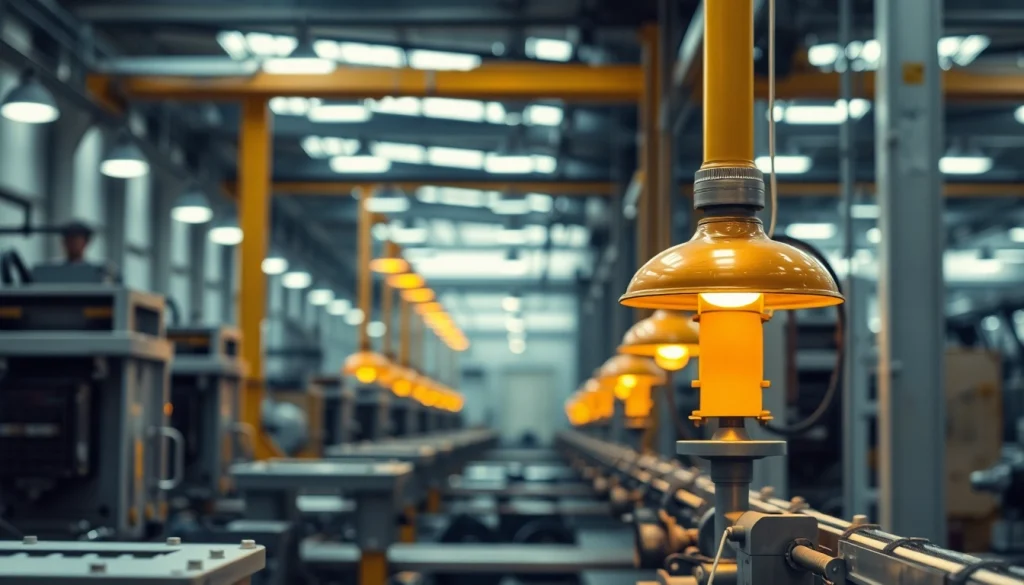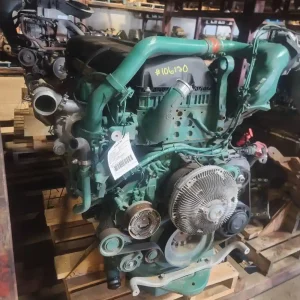Discover the Efficiency of Industrial Heat Lamps: Benefits and Applications

Understanding Industrial Heat Lamps
What are Industrial Heat Lamps?
Industrial heat lamps are specialized devices that utilize infrared radiation to generate thermal energy. Unlike conventional heating methods that rely on air or conduction to transfer heat, infrared heat lamps radiate energy directly to objects and surfaces, allowing for rapid and efficient heating. This technology has become crucial in various sectors, as businesses seek to enhance productivity and reduce costs. By harnessing quartz infrared emitters, these lamps offer a unique solution for numerous heating applications across industries, such as manufacturing, automotive, and printing. For businesses looking to improve their operational efficiency, industrial heat lamps stand out as a modern solution.
Types of Industrial Heat Lamps
Industrial heat lamps are categorized based on their operational wavelength: short wave, medium wave, and long wave. Each type offers unique characteristics suited for specific applications.
– Short Wave IR Lamps: These emitters provide intense heat almost immediately, making them suitable for tasks that require quick drying and curing processes. Short wave infrared radiation is highly efficient as it penetrates surfaces directly, thus heating them quickly.
– Medium Wave IR Lamps: These lamps are often favored for applications that require moderate heat levels over larger surface areas. They are excellent for evenly heating surfaces due to their ability to balance efficiency with penetration.
– Long Wave IR Lamps: These are used for applications where prolonged heating is essential. Long wave infrared radiation is less intense but produces a consistent and gentle heat, ideal for processes that require gradual increases in temperature.
Understanding the differences between these types can help manufacturers and businesses select the most appropriate heat lamp technology for their specific needs.
How They Work for Heating Applications
Industrial heat lamps operate on the principle of radiation, where infrared light is converted into heat upon contacting an object. This direct method eliminates the need for air as a medium for heat transfer, leading to greater efficiency.
In applications such as automotive drying or ink curing, the target area is subjected to the infrared radiation emitted by the lamp. The process is quick and efficient; objects absorb the infrared wavelengths, leading to rapid thermal changes without overheating the surrounding environment. This capability allows businesses to keep operations running smoothly while reducing energy consumption, making infrared heating a leading choice in industrial heating technology.
Benefits of Using Industrial Heat Lamps
Energy Efficiency and Cost Savings
One of the primary advantages of industrial heat lamps is their remarkable energy efficiency. With energy conversion rates reaching up to 96%, these lamps present a significant advantage over traditional heating methods. By converting almost all the energy they consume into usable heat, they can lower operational costs by 20% to 50%.
Moreover, since heat is applied directly to the materials rather than heating the air, businesses can operate in a more controlled and efficient manner. This efficiency translates directly into reduced electricity costs, lower fuel consumption, and an overall leaner operational budget.
Versatility in Various Industries
Industrial heat lamps are not restricted to a single application. Their versatility has made them indispensable in numerous sectors:
– Automotive: Used for drying paint and finishes quickly to speed up production cycles.
– Printing: Applied in curing inks to ensure high-quality prints and reduce pause times during production.
– Manufacturing: Utilized to maintain optimal operating temperatures for machinery and materials or for curing adhesives.
This adaptability across various industries enhances their appeal for businesses looking for multipurpose heating solutions.
Improved Work Environment and Productivity
The use of industrial heat lamps not only boosts efficiency but also contributes to a better working environment. Traditional heating methods often lead to uneven temperatures, drafts, and discomfort for workers. In contrast, infrared heating maintains a consistent temperature across workspaces, fostering a more pleasant atmosphere.
Additionally, the swift heating capabilities of these lamps reduce wait times and enhance workflows. Workers can move faster between tasks without downtime, leading to heightened productivity levels. Consistent and reliable heating helps maintain quality control, which is pivotal in sectors that rely on high-precision processes.
Key Applications of Industrial Heat Lamps
Automotive Drying Processes
In the automotive industry, finishing and drying paint require specific conditions to ensure a patented, high-quality result. Industrial heat lamps excel in this domain, providing quick and steady heat that ensures paints and coatings cure effectively without damage. The speed of the heating allows for rapid completion of processes, thus reducing overall cycle time and increasing throughput.
The ability to focus heat precisely where it’s needed minimizes the risk of overheating surrounding areas, enhancing not only the quality of the finish but also the safety of the operation.
Printing Industry Solutions
The printing industry demands efficient curing processes to produce high-quality outputs swiftly. Industrial heat lamps automate this component of the operation, curing inks almost instantaneously. This not only saves time but also increases the quality of printed material, as the fast curing prevents smudging and ensures the integrity of colors.
By employing infrared heaters, printing businesses can achieve faster turnaround times without sacrificing quality, an essential factor in staying competitive in today’s fast-paced market.
Heating in Manufacturing Facilities
In manufacturing, maintaining optimum temperatures is vital for both machinery and product integrity. Industrial heat lamps provide a reliable solution for curing, drying, and even warming components before assembly. Their ability to deliver targeted heat facilitates improved production efficiency and reduces the likelihood of defects.
Moreover, these lamps can serve in multiple capacities across a facility, from equipment maintenance to product assembly, making them an invaluable asset for manufacturers seeking flexibility and reliability.
Comparison of Different IR Lamp Technologies
Short Wave vs. Medium Wave IR Lamps
When comparing short wave and medium wave infrared lamps, it’s essential to consider the specific heating requirements. Short wave lamps are best suited for drying and curing processes that demand immediate heat application, while medium wave lamps excel in scenarios requiring extended coverage areas without the intensity of short wave systems.
Choosing between these options comes down to evaluating the process requirements and understanding the trade-off between speed and surface heating consistency.
Advantages of Long Wave IR Lamps
Long wave infrared lamps provide excellent heating options for applications requiring less immediate intensity. They produce lower heat levels but with consistent delivery. This makes them ideal for scenarios like maintaining temperature across large areas or gradually warming components without risking thermal shock.
While they may not be suitable for rapid drying, their capacity to provide steady heat over long periods makes them invaluable in specific processes ripe for long-term stability.
Selecting the Right IR Lamp for Your Needs
Choosing the appropriate infrared lamp requires a comprehensive understanding of your specific applications and operational goals. Factors such as the nature of the materials being heated, the desired speed of the process, and energy efficiency considerations should all weigh into your decision.
Conducting a thorough needs assessment and evaluating the characteristics of different infrared technologies will help ensure you select the right product to meet your heating requirements.
Conclusion and Future of Industrial Heat Lamps
Innovations in Infrared Heating Technology
As industries evolve, so too does the technology surrounding industrial heat lamps. Innovations such as enhanced reflector designs, improved ceramic coatings, and advances in energy efficiency metrics continue to drive the development of infrared heating systems. These improvements not only support better performance but also adapt to changing industry needs and environmental standards.
The ongoing investment in research and development by leading manufacturers, such as Huai’an Yinfrared Heating Technology, positions infrared heating solutions as a forward-thinking choice for the future.
Predictions for Industry Trends
Looking ahead, it is predicted that industries will increasingly turn toward sustainable solutions, including energy-efficient infrared technologies. Companies will prioritize heating solutions that align with eco-friendly practices while still delivering remarkable efficiency and effectiveness.
The demand for customized heating systems tailored to specific operational needs will also rise, further driving research into innovative product designs and applications.
Final Thoughts on Enhanced Heating Solutions
Industrial heat lamps are rapidly transforming the heating landscape across various sectors. Their energy efficiency, adaptability, and ability to improve working conditions position them as critical tools for modern businesses.
As technology continues to advance, companies leveraging infrared heating solutions will not only enhance their operational capabilities but will also set themselves apart in increasingly competitive markets. Embracing these innovations represents not just an investment in equipment but a strategic move toward sustainable and efficient operational practices.




